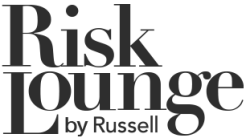
Miss-selling
A 2012 AIG Report – Impact of Eurozone Crisis on Underwriting and Claims - reported that the nature of claims being experienced includes the recognised style of miss‐selling claims, but also insolvency claims and transactional disputes. There has been a 50% increase in insolvency claims which is currently impacting on the insurance market.
As an example of this, one can look at highly leveraged companies. Many corporates will be refinancing over the next few months with an estimated £1 trillion that needs to be refinanced over the next 18 to 24 months.
Identity Theft
A group of 13 UK banks and credit card firms have agreed to pay up to £1.3bn in compensation to consumers who were mis-sold insurance against identity theft and the loss of credit cards, the UK financial regulator said.
Regulation
Early Warning Indicators would see non-life insurers subjected to a fresh capital test, which would be passed if they hold 175 percent of a Minimum Capital Requirement (MCR).
Balance Sheet risks
In one single day on the London stock market, more than 700,000 trades may occur at a value of over £4 billion. In this environment understanding the Value at Risk (VaR) becomes a complex, timely problem.
Financial Institutions have specific exposures which enable reinsurers to import entire client portfolios for exposure management on all risks or target sub-set for reporting purposes.
Data Manipulation
To facilitate the handling of large data volumes, companies need the ability to perform data manipulation and validation. A migrator can provide an intelligent name matching process which assists underwriters in importing different client portfolios and building various alias tables.
For aggregate management, in response to actual market losses, users are able to import multiple loss scenarios and manage their aggregates accordingly.
To find out more about Russell’s approach to managing Financial Institution underwriters’ portfolio risks, click here.





